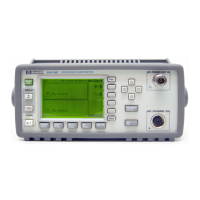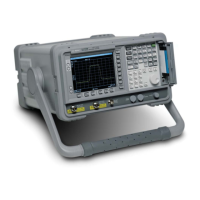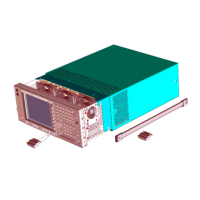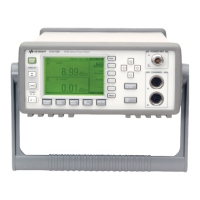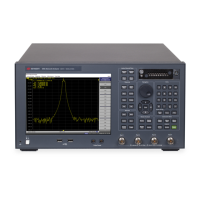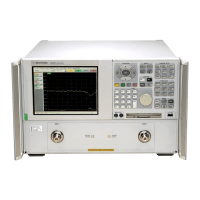Chapter 1 23
Introduction and Measurement Theory
Cable Impedance and Structural Return Loss Measurement Theory
When measuring spools of cable, typically two connectors are used: the test-lead
connector and the termination connector. (See
Figure 1-3.) These connectors
provide the cable interface and are measured as part of the cable data.
Figure 1-3 Basic SRL Measurement Setup and Connections
Often, slight changes in the test-lead connector can cause significant changes in the
values of structural return loss measured at high frequencies. This is because the
reflection from a connector increases for high frequencies. In fact, the return loss of
a test-lead connector can dominate the SRL response at frequencies above 500
MHz. This is where training, good measurement practices, and precision cable
connectors are needed, especially for measurements up to 1 GHz. Precision
connectors are required to provide repeatability over multiple connections. Slip-on
connectors are used to provide rapid connections to the cables, but require careful
attention in obtaining good measurement data. Repeatability of measurement data is
directly affected by the connector's ability to provide a consistently good
connection. This is the major cause of repeatability problems in SRL measurements.
Effects of the test-lead connector at the measurement interface are observed as a
slope in the noise floor at higher frequencies.
By observing the SRL measurement display and slightly moving the connector, the
effects of the connection can be observed at the higher frequencies. The test-lead
connector should be positioned to obtain the lowest possible signal level and the
flattest display versus frequency. The mechanical interface typically provides an
increasing slope with frequency and flattens out as the connection is made better.
The termination connector may also affect the SRL measurement if the cable
termination connector and load provide a significant amount of reflection and the
cable is short enough. As longer lengths of cable are measured, the cable attenuation
provides isolation from the termination on the far end. Use a fault location
measurement technique to observe the reflection from the termination at the far end
